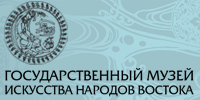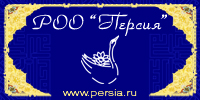Oriental Collection № 1/2014
 |
A photo essay on Iran by Tatiana Filatova and Yekaterina Filatova opens the first issue of 2014. The theme is continued by a number of items on history and culture of Iran.
The Iranian Notebook
- Lana Ravandi-Fadai. Customs and Omens of Nowruz. The holiday of Nowruz («the New Day») marks the beginning of spring and the awakening of the nature. It dates back to the 6th century BC and it is celebrated till now, impelling people to peace, kindness and mutual help.
- Konstantin Markov, Narine Akobyan. Qajar portrait: from canon to life. The Persian painting of the Qajar dynasty period issued from the classical Persian miniature. Throughout the 19th century it had been developping from gala portraits of monarchs into scenes of everyday life. It left gradually behind the sketchiness and enriched itself with artistic devices of the European painters.
- Mariam Emami. Among Pilgrims and City Dwellers. Meshed is known as a sacred city of the Shia Muslims, where tens of thousands of pilgrims come. There are a lot of interesting facts to be told about this city. It is famous for manufacturing of saffron, leather and fur products. The people of Meshed have their peculiar habits, world outlook and attitude to each other.
- Tatiana Filatova. Capitals of Iran. And How Many of Them Were There? Everyone knows, the capital of Iran is Tehran. But the location of the capital had been changed several times throughout the centuries-old history of Iran. The glory of Persepolis and Pasargadae has gone, and only the ruins remind of it now, but Shiraz and Isfahan are as magnificent as before.
- Between the Momentary and the Everlasting. In the Oriental Center of the Russian State Library an exhibition took place, where two Iranian artists — Rahim Charhi, a master of ornament (tazhib), and Gafar Ganbarpur, a master of calligraphy — presented their works. Miniature and calligraphy in Iran don’t lose their significance as spiritual art. The orientalists Yury Averyanov and Timur Korayev give an account of this event.
- Maria Filatova. Imprint of the Past. The Soviet poster of the period 1918 — 1940 dedicated to the Orient is a singular and unique phenomenon. The posters were used as instruments of propaganda and mobilization of the masses, transmitting the tasks set by the state authorities. The artists found fanciful graphic solutions, combining avant-garde style, revolutionary message, and oriental religious symbols.
- Irina Vinokurova. The Feast Day of the Prophet Elijah on Mount Carmel. The religious celebrations in the Orthodox temples of the Middle East always include some elements, which are unusual for the Russian Orthodox Church. A striking example is the Temple of the Prophet Elijah in Haifa. The service here is said in Russian and Arabic, and after the service there are collective meals and boy scout parades.
- Anna Suvorova. A Field Military Love Affair in an Indian Way. The history of India is full of detective stories, thrillers and melodramas. The life of Begum Samru (1753 — 1836) was a real blockbuster, made up of a mixture of many genres. She made her way up from a whore to the ruler of the principality of Sardhana.
- Galina Mironova. The Senussi Order in the Sands of the Sahara. The author tells about the little known period in the history of the closed Sufi order, which existed in the Libyan Desert in the 19th century. Besides doing educative and missionary work, the eminent members of the Senussi Order fought against Italian aggressors and even ruled independent Libya.
- Aleksandr Meshcheryakov. Ueno Public Park — a Model of the Japanese Empire. The gardens of the European type, open for every person of any social status, were introduced in Japan in the 1870s. The public parks were to be the space controlled by the emperor, they had to reproduce the main values and goals of the state. Ueno Park is one of them.
- Yekaterina Bugayevskaya. Flower Miao and Children of Snow. The ethnographer’s notes give an eyewitness account of the everyday life and habits of the national minorities of Guizhou province, China.
- Yelena Voytishek. To Stroke the Mane of a Wild Horse and to Catch the Tail of a Sparrow. The text explains such a strange title of the article: these are two kinds of motion in the Chinese gymnastics qigong. The author, a professional orientalist, tells about her own experience in understanding the deep meaning of qigong — an art of controlling the vital energy.
- Yury Zinin. Clay Skyscrapers of Shibam. Jerusalem Syndrome. Fungi of the Desert. The «Arabesques» column presents three notes on unusual phenomena which the author saw while travelling through Northern Africa and the Middle East.
- Dai Chenping, Han Fang. What Copper Coins of Xinjiang Tell about. The article touches upon coins with square holes, which had been in use in Xinjiang before the 1930s. The inscriptions on the obverse were made in Chinese, Manchurian and Uygur, which is a singular phenomenon in Chinese numismatics.
- Viktor Pogadayev. A Romantic from Java Island. A biography and oeuvre of the Indonesian painter Raden Saleh.
Our «Orientnet» section presents web resources on Zoroastrism.






